Apparently they came from China:
While the descent of dogs from wolves through domestication is non-controversial in genetics, determining the region in the world where this occurred has been more of a question. Earlier studies had suggested a Middle Eastern origin for dogs.
A new study focusing on the lineage of the Y-chromosome indicates that dogs originated somewhere in eastern Asia, south of the Yangtze River.
My last meal in Tokyo came off a conveyor belt:
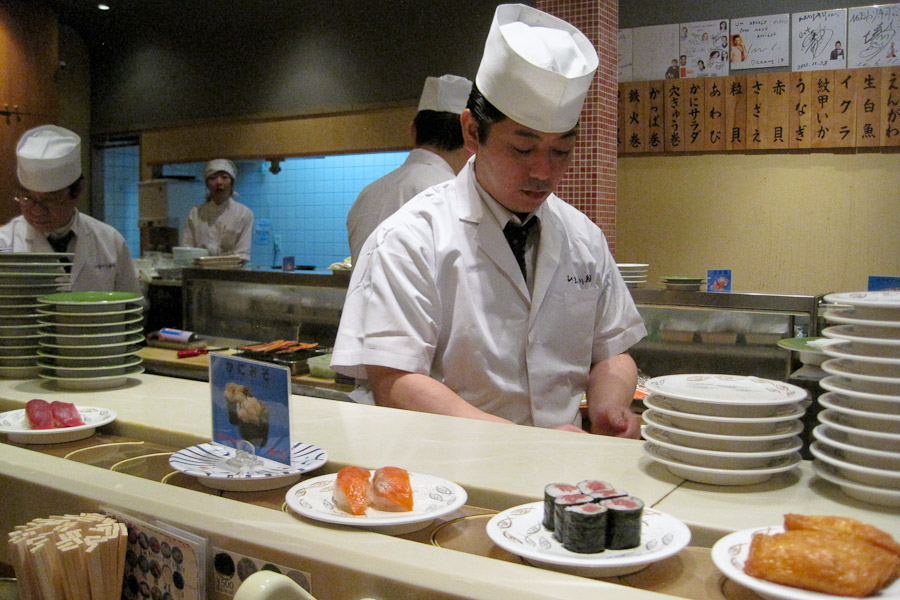
For ¥600 I got this:
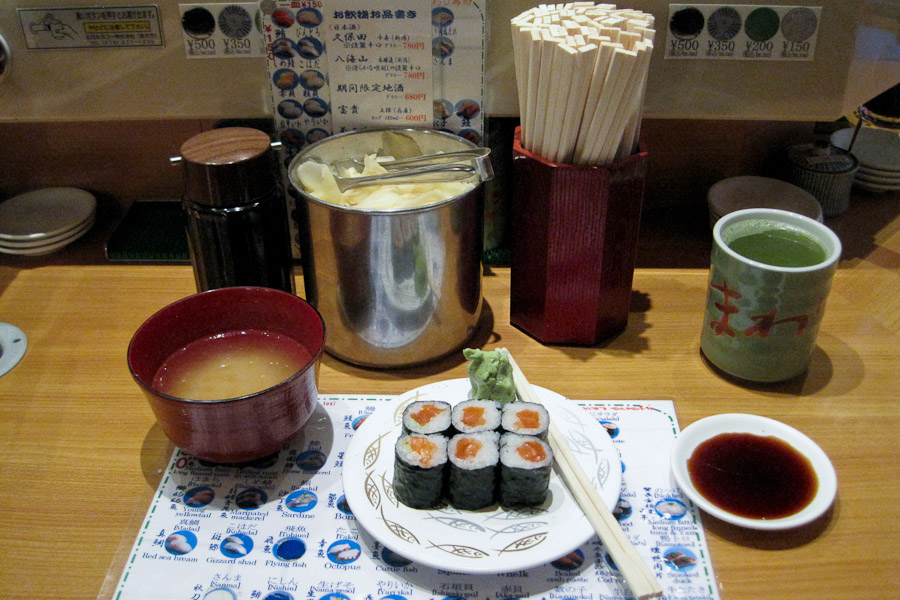
...plus a salmon roll, a pair of shrimp nigiri, and a pair of grilled salmon nigiri. And it was yum.
If you're ever southwest of the Shinjuku train station, look for this place:
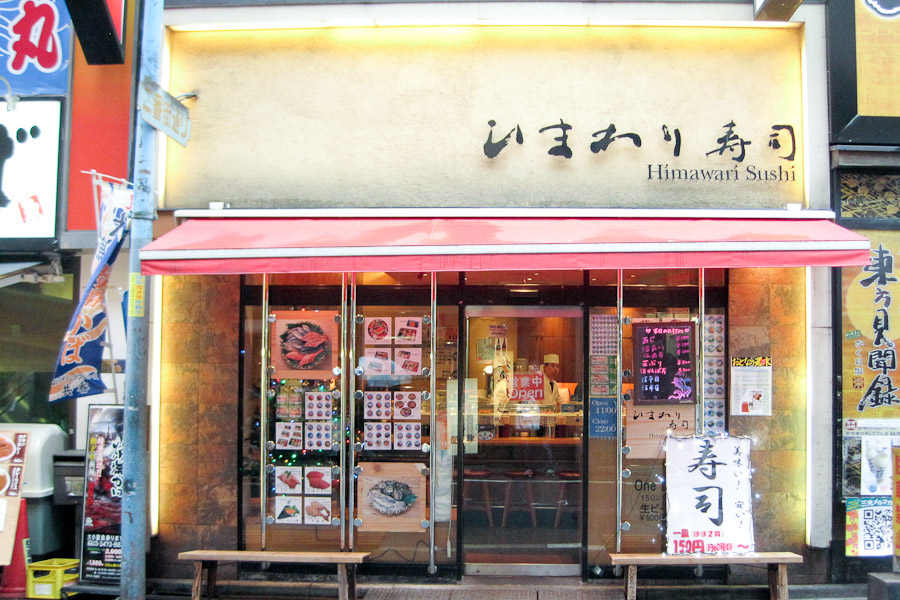
And in a little over an hour, the long voyage home begins...
I didn't get up at 4am to go watch the tuna auction at the Tsukiji Fish Market, but I did go there for lunch. Oh, what a lunch. This man knows how to make sushi:
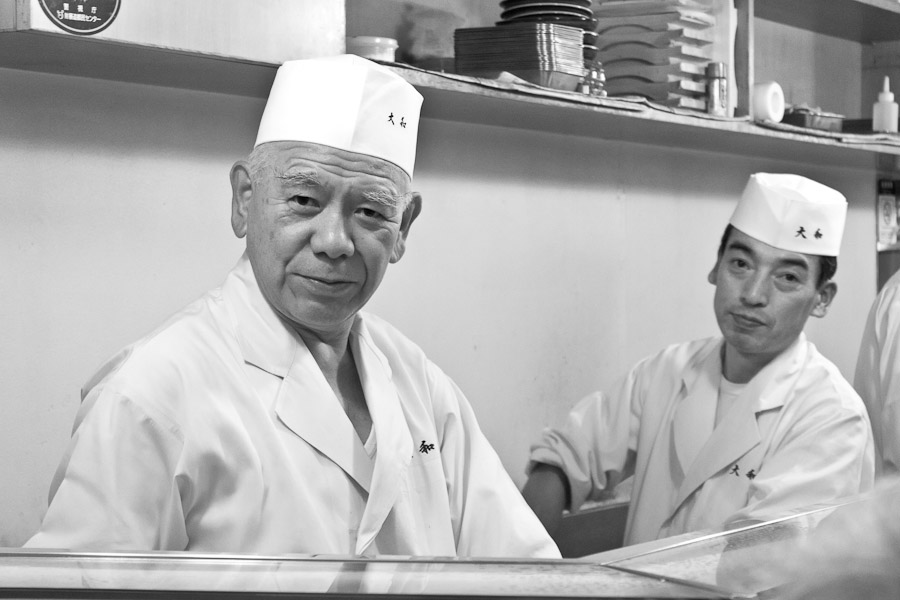
And I found the place by looking for a line:
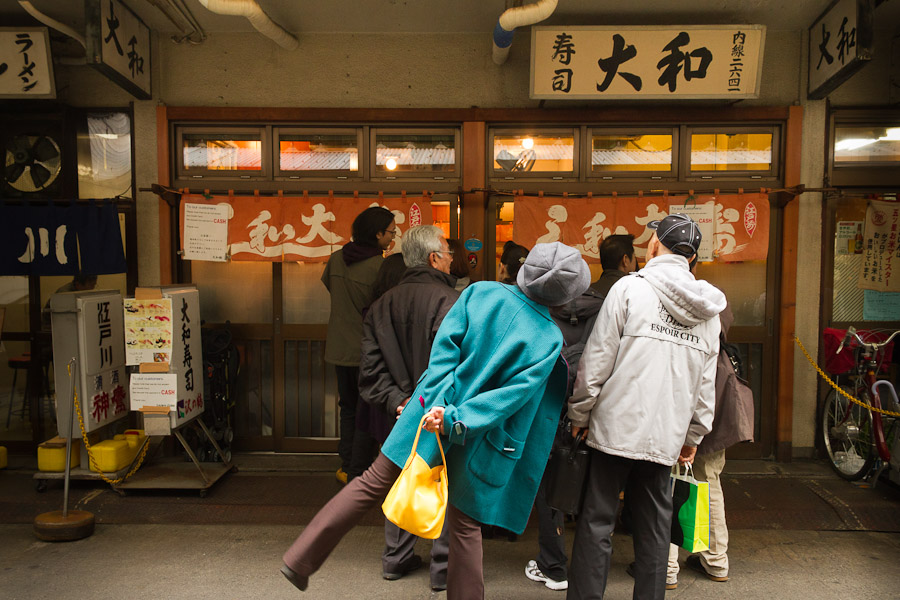
Then I had one tekka maki roll, one tai nigiri, one hamachi, and because the tekka maki made me want to cry, I had a maguro.
Let me explain this tuna.
No, there is no time to explain, let me sum up: It came off the boat this morning.
From the first bite of the tekka maki, when the tuna started melting on my tongue, I understood sushi. I'll still enjoy Green Tea, Ringo, and a couple other places in Chicago, but now, I've had the ur-sushi, right at the source. I might have to go back there tomorrow or Thursday for lunch... (Tomorrow and Thursday? Possibly.)
Oh, and the miso soup? Unbelievable.
Every year, the Economist publishes the Big Mac Index, "a fun guide to whether currencies are at their “correct” level. It is based on the theory of purchasing-power parity (PPP), the notion that in the long run exchange rates should move towards the rate that would equalise the prices of a basket of goods and services around the world." The current spot price of a Big Mac in Tokyo today is ¥680: just under $9. Yes, NINE DOLLARS.
This fact might cushion the surprise I experienced this evening when I discovered that four small chicken skewers (yakitori), one medium bowl of rice, and a beer, cost $32.75, including tax. This wasn't at the Tokyo equivalent of Charlie Trotter's; this was at an anonymous izakaya near the Shinjuku train station.
Now, friends and enemies alike will tell you that I routinely spend that much at, say, my remote office. There's a tip, for starters, not to mention the occasional disnumeria after I've spent an afternoon there. Only, at Duke of Perth, that amount goes a little farther.
I've noticed other things beside the angina-inducing prices in this city. In no particular order:
- I stand out. I've traveled all over the world, and in no other city (except possibly Shanghai) do I stick out more obviously than I do here. I find no small irony in that here, people don't know whether I'm American or Albanian; but they know I speak English, they know I'm not from these parts, and they know I'm the most likely person in any crowd to act unpredictably. It's not just me; all European-looking people look out of place here. And we all smile wanly at each other on the streets. It's odd.
- Shibuya at night looks just like you'd imagine, sort of Piccadilly Circus, Times Square, and North Michigan Avenue smashed together and fed amphetamines. I'm glad I had the experience. People who know me will understand how happy I am to report that I have been to the most crowded, most chaotic, and most commercial place I have ever seen (i.e., the Shinjuku train station), on my way to the most crowded, most chaotic, and most commercial place the world has ever seen (i.e., Shibuya Crossing at 5pm). And this was Sunday night. Tomorrow, when both the train station and the shopping area are actually busy, I might avoid it. In fact, since my access to the rest of Japan depends on going through the busiest train station in the world, I may start fantasizing about renting a cabin in upper Manitoba for my next vacation.
Obligatory Shibuya-at-night photo:
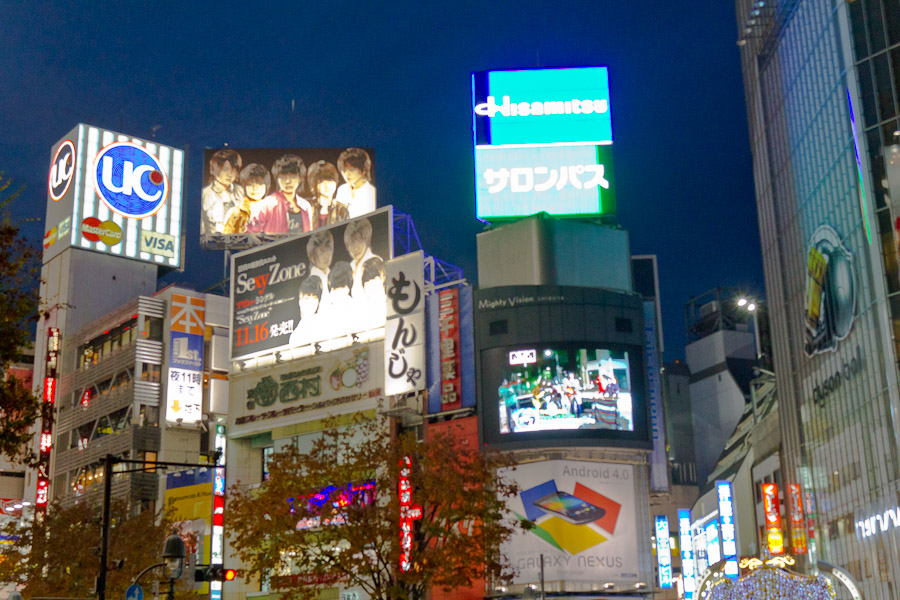
- No one here speaks English, but it doesn't matter. I've encountered none but helpful, patient people for the last two days. The price of dinner tonight may have made my baby cheeses cry, but the wait staff really dug in and helped me find the right words in my little dictionary. They were also enormously impressed that I know how to use chopsticks, which puzzled me, because I haven't encountered too many Americans who can't. Perhaps they thought I was British?
None of these things really bothers me, by the way. Well, all right, the crowds in Shibuya did, but it's Tokyo, so there are crowds, so what? I mean, we don't have this back home:
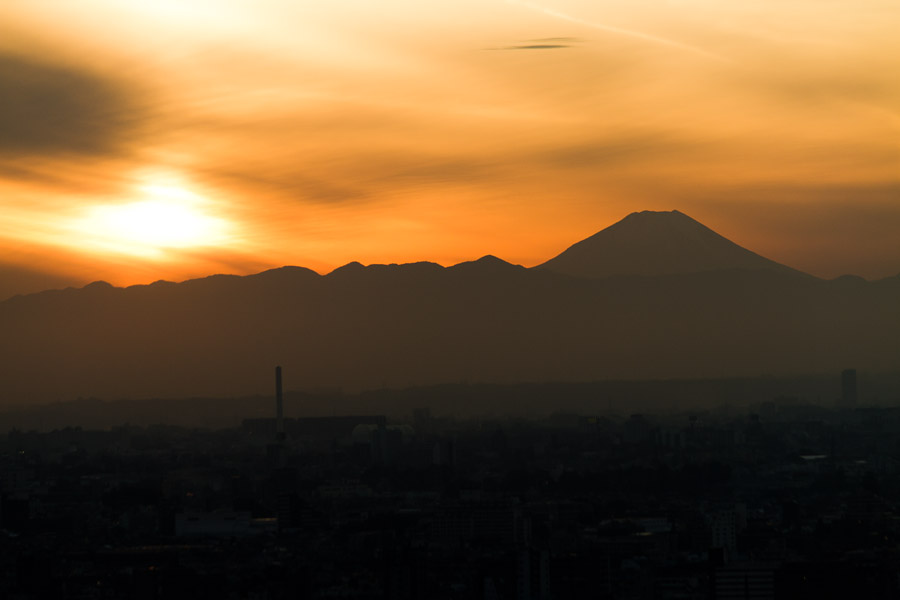
Lonely Planet has by far the most helpful guidebooks in English. Their Tokyo City Guide recommends hopping on the Yamanote train to get an overview of the city. The train goes around central Tokyo in a little more than an hour; when combined with an all-day rail/subway pass (¥1580), it gives you a good overview of the place. Here's the inside (counterclockwise) train pulling into Tokyo Station:
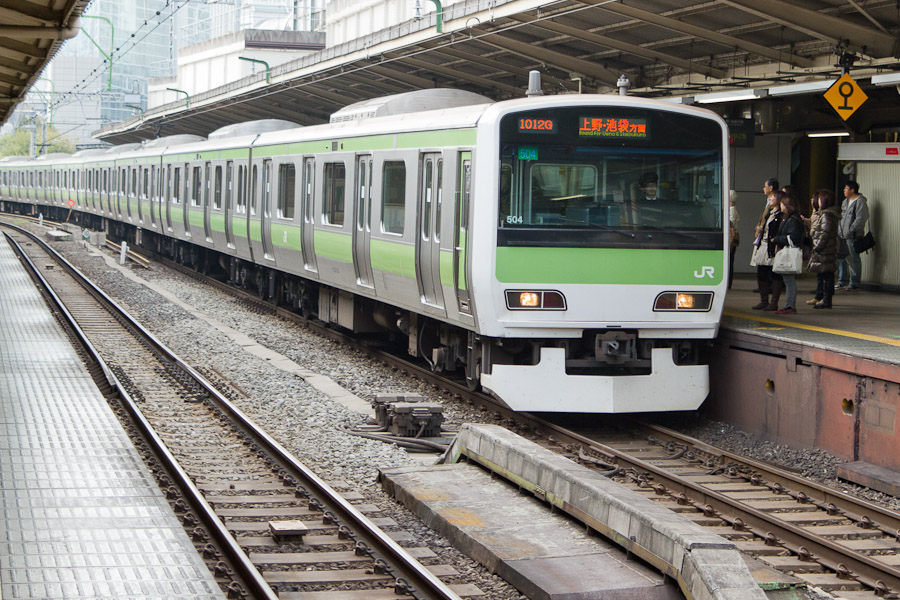
From Shinjuku, I went around to Tokyo Station, and walked over to the Imperial Palace. You can't get near the place, really; there's even a moat around it, in case of siege engines. I did wander the outer garden, dodging bicycles and Japanese tourists, and finding an unusual (for me) number of people doing watercolors:
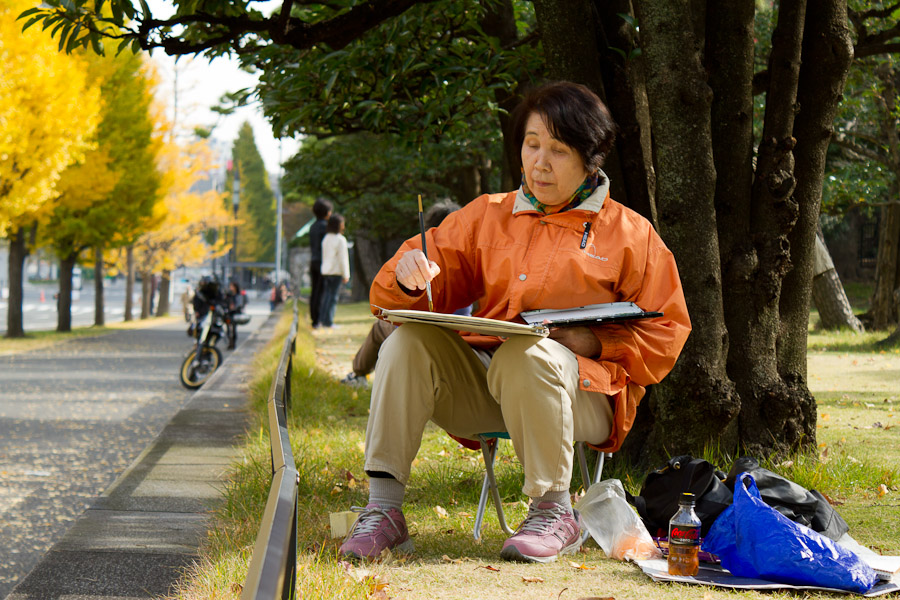
Back to Tokyo Station for lunch in one of the crowded food courts, where I sampled three different kiosks and only bit into one thing I didn't like. (I must remember to ascertain what part of the chicken is on the teppanyaki stick.)
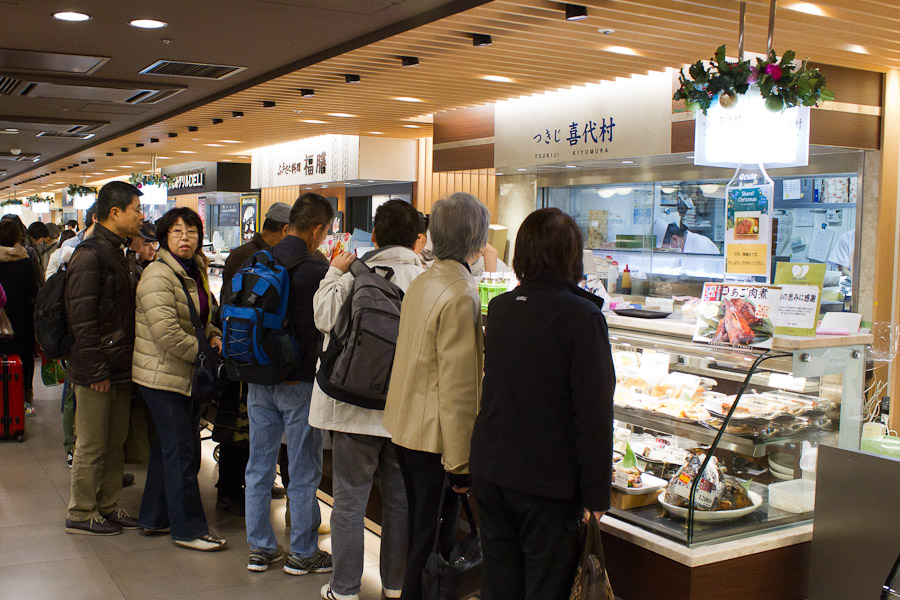
I decided not to try these, however; $15.50 was just too expensive:
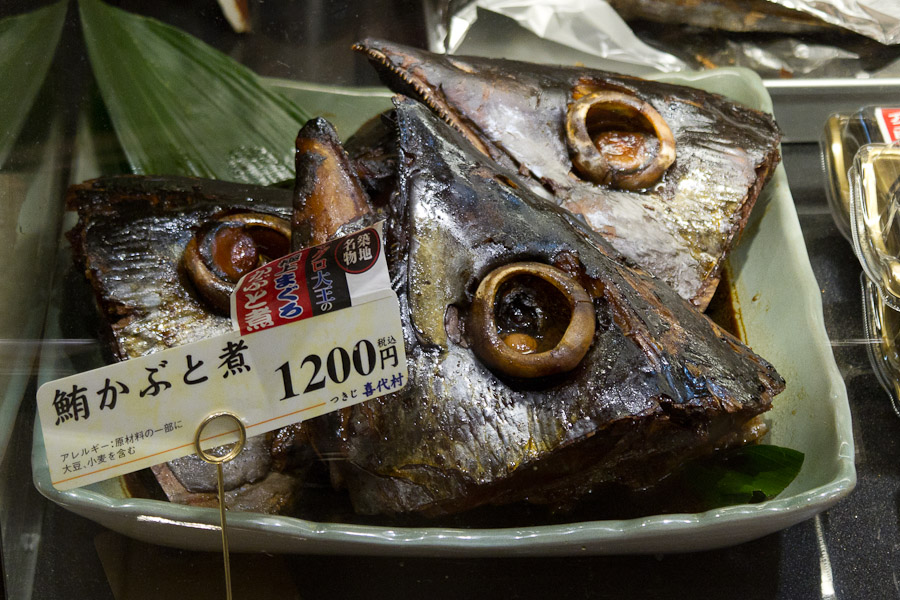
After lunch I continued on the Yamanote train to Shibuya, which everyone who's ever seen a photo of Tokyo has seen. I plan to head back there around sunset to (a) get photos of it at night and (b) eat dinner in one of its thousands of little restaurants. Stand-up sushi, maybe? Itadakimasu!
Sam Harris has a good explanation of rules to live by if attacked:
The primary goal of self-defense is to avoid becoming the victim of violence. The best way to do this is to not be where violence is likely to occur. Of course, that’s not always possible—but without question, it is your first and best line of defense. If you visit dangerous neighborhoods at night, or hike alone and unarmed on trails near a big city, or frequent places where drunken young men gather, you are running some obvious risks.
Whatever your training, you should view any invitation to violence as an opportunity to die—or to be sent to prison for killing another human being. Violence must truly be the last resort. Thus, if someone sticks a gun in your face and demands your wallet, you should hand it over without hesitation—and run.
This is the core principle of self-defense: Do whatever you can to avoid a physical confrontation, but the moment avoidance fails, attack explosively for the purposes of escape—not to mete out justice, or to teach a bully a lesson, or to apprehend a criminal. Your goal is to get away with minimum trauma (to you), while harming your attacker in any way that seems necessary to ensure your escape.
I've started Krav Maga training mainly to get in shape—but also because Krav Maga teaches the same principles.
Two commemorations today.
First, and most important, this Veterans Day we honor the men and women who have defended our country, while the Commonwealth celebrates Remembrance Day. Specifically, we commemorate the end of the Great War, ninety four years ago today.
Second, we celebrate International Nigel Tufnel Day, who showed us what it means to go to 11.
- Two of my Duke classmates;
- Crystal Bowersox;
- Snow (which, in the last five minutes, has disappeared in favor of crystal clear blue skies); and
- An aggressive batch of chicken soup that, about an hour and a half ago, destroyed my laptop.
Three out of four is, all things considered, a good average.
Singer Kina Grannis has released a new video that used 280,000 Jelly Bellies and took her nearly two years to make:
As a plus, it's a catchy song with not one but two ear-worms in it. (Watch for the second one.)